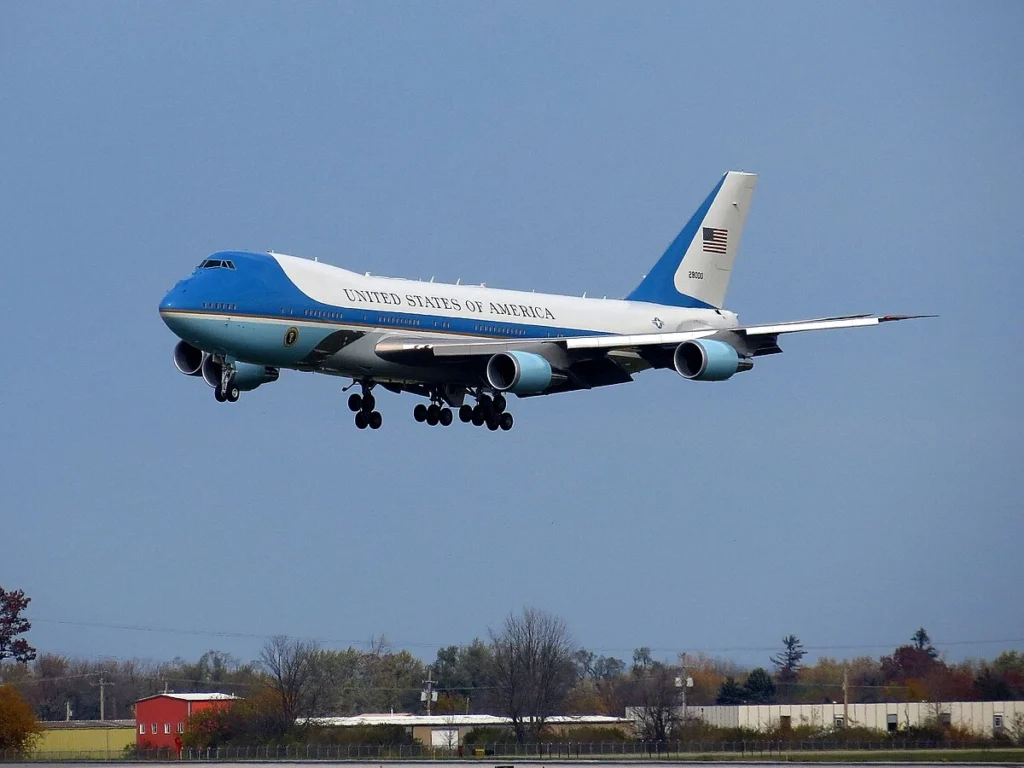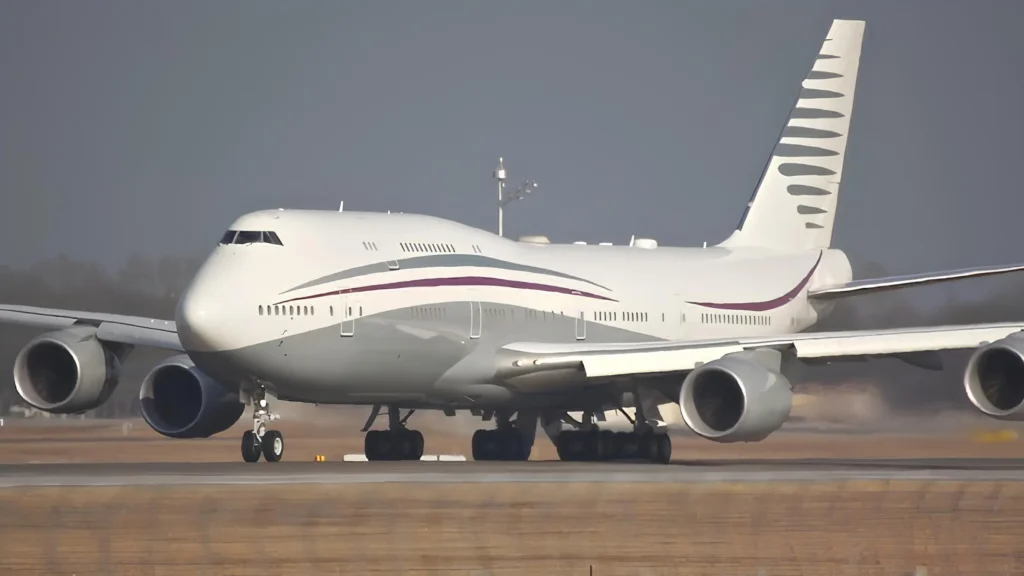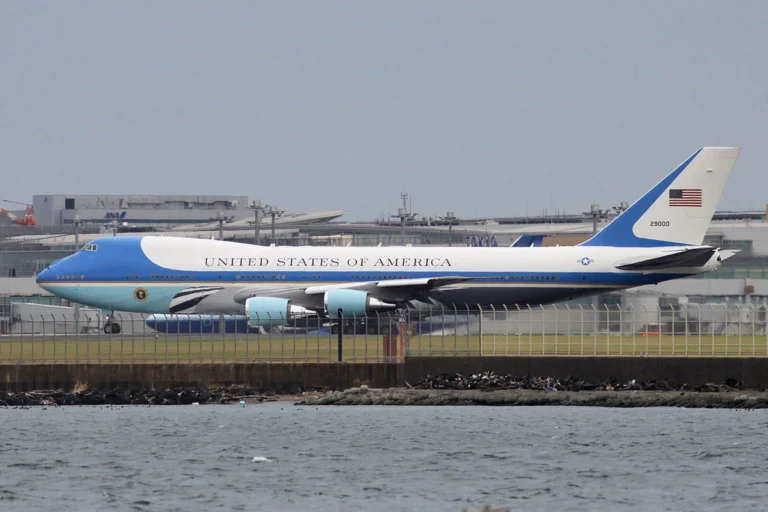WASHINGTON- President Trump is pushing for an interim Air Force One solution due to Boeing’s (BA) prolonged delays in delivering new 747-8 jets. A retrofitted Boeing 747-8 from the State of Qatar, registration P4-HBJ, is being modified by L3Harris for potential use by late 2025.
According to The Wall Street Journal, the move comes as Boeing struggles with structural and wiring issues, delaying the official Air Force One replacement until 2035. The interim jet will lack some advanced systems but aims to provide a modernized alternative to the aging VC-25A fleet.

Trump Interim Air Force One
The iconic Air Force One, operated by the United States Air Force, has been a symbol of presidential authority since the 1940s, with Boeing aircraft serving presidents since Franklin D. Roosevelt.
Currently, two Boeing 747-200s, designated VC-25As, function as Air Force One when carrying the president.
These aircraft, delivered in 1990, are aging and require replacement. A decade ago, the US government contracted Boeing to deliver two new 747-8s by 2024 for $3.9 billion, a deal Trump renegotiated during his first term to save $1.4 billion.
However, Boeing now projects delivery around 2035, with costs escalating billions over budget due to wiring complexities and structural issues, including door modifications.
Frustrated by these delays, Trump has turned to L3Harris, a smaller defense contractor, to overhaul a 13-year-old Boeing 747-8 (registration P4-HBJ), previously owned by the Qatari government.
The aircraft, recently toured by Trump at Palm Beach International Airport (PBI), is being retrofitted with essential systems to serve as an interim Air Force One.
The goal is to have it operational by fall 2025, complementing the existing VC-25As and providing a backup during maintenance.

Interim Air Force One Challenges
Retrofitting a used aircraft for presidential use is no small feat. The interim 747-8 will lack many advanced systems standard on Air Force One, such as robust security and communication equipment.
L3Harris is prioritizing essential modifications to meet the tight timeline, but the rushed process raises concerns about capability gaps.
For instance, the aircraft’s defensive systems and encrypted communication lines may be scaled back compared to the VC-25As or the delayed 747-8s.
Another point of contention is the aircraft’s livery. Trump has advocated for a “patriotic” dark blue paint scheme, but this choice could increase the jet’s heat signature, potentially interfering with sensitive electronics.
The alternative is a previously approved livery, though Trump’s preference may prevail despite technical challenges.
These modifications, while cosmetic, require careful engineering to avoid compromising the aircraft’s performance.

Looking Ahead
Trump’s plan to fly an interim Air Force One by fall 2025 reflects his urgency to modernize the presidential fleet while sidestepping Boeing’s delays.
The retrofitted 747-8, while a practical stopgap, will not match the capabilities of its predecessors or the eventual replacements.
As L3Harris races to meet the deadline, the project’s success will depend on balancing speed, safety, and functionality.
The long-term 747-8 program remains critical, with Boeing tasked to deliver fully equipped aircraft by 2035.
Until then, the interim jet will serve as a bridge, ensuring the president can travel securely while the Air Force One legacy evolves.
Stay tuned with us. Further, follow us on social media for the latest updates.
Join us on Telegram Group for the Latest Aviation Updates. Subsequently, follow us on Google News

